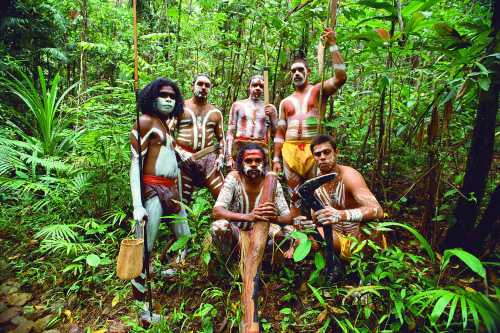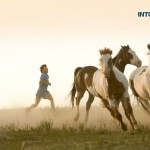Much like us Indians, they are a tribe shrouded in ancient mystery and the mists of dreamtime. They have never been a part of mainstream Australia Tourism. The aboriginal people refuse to let go of their way of life and therefore, their culture is at the cusp of extinction today. Like all other minority communities the world over, they have been ill-treated at various points of time throughout the course of history. While the native Americans and Africans have under gone their civil rights movement, some striving still to build stable societies; the Aborigines still struggle for full equality in Australian society and don’t own much of the land that was taken from them.
When you come to look at it, they are a beautiful people, so simple and self-sustaining.
Where did they come from?
Their belief in dreamtime is unwavering. Dreamtime is the beginning of time, when the ancestral totemic spirit beings created the world and everything in it. But modern anthropology suggests, that like the rest of human population, they too came “Out of Africa”. They walked out of Africa to Eurasia and then migrated along the coastal areas of Southeast Asia from India. The Aborigines then crossed a land bridge from Asia to Australia which is believed to have existed about 45,000 to 50,000 years ago. The Aborigines share heritage with many of the native peoples of Papua New Guinea, who DNA tests have proved were part of the same ancient transcontinental migration.
What do they eat?
Now this you won’t find anywhere while eating out in Australia.
They followed a typical hunter-gatherer lifestyle. They had deep knowledge of their land, sources of water, and the affects of seasonal cycles on plant foods and game. The diversity of food supply was affected by geographical landform, climate and season. They had a diet rich in both, animal and plant protein and fat - small marsupials, shellfish, reptiles, insects, honey, eggs and plant foods like yams, bush tomatoes, figs, quandongs, corms of bush onion, wild orange truffles, gall nuts of the mulga apple or bloodwood apple and the seeds from some grasses. Men mainly hunted alone or in pairs for larger animals such as mammals, birds, reptiles and fish.
What do they wear?
Australian Aborigines have worn little if any clothing at all for most of their existence. This is mostly attributed to their beliefs in the sacredness of Australia’s natural resources. Australia did not naturally promote agricultural practices; it has no native livestock animals and much of its land was unfavorable to crops. When they did create garments to protect themselves from winds and cold weather, they typically made them from animal pelts, along with hair and other non-agricultural fibers.
It is a common tradition for Aborigines to cover themselves with clay or animal fat. They quite like body decoration, adorning themselves with strings of jewelry or painting their bodies with paints made from charcoal and an orange clay pigment known as ocher.
What is their religion?
Although the common belief is rooted in the spirits of dreamtime, every individual tribe has their own tangible deities. All Aboriginal deities can be categorized into three main types: Creation Beings, Ancestral Beings (the first people) and Totemic Beings (the basis for the division of society into two moieties.
The Australia that settler colonialism has produced is one in which aboriginal Australians have a life expectancy 17 years shorter than non-aboriginal Australians. Aboriginal Australians make up 2% of the Australian population but 25% of its prison population. Many live in conditions of abject poverty, unthinkable to the non-aboriginal majority. The Aboriginal lands, whatever little of them still exists, are not really the top places to see in Australia.
Latest posts by Shivangi Rajendran (see all)
- Top 6 Places to See in Pondicherry - October 29, 2021
- Top 6 Places to See in Coorg - October 25, 2021
- Top 10 Activities to do in Pondicherry - October 24, 2021























